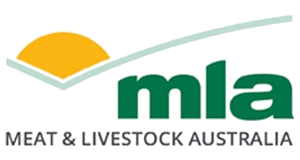Transport Business Model Validation
| Project start date: | 01 February 2017 |
| Project end date: | 23 July 2017 |
| Publication date: | 01 December 2017 |
| Project status: | In progress |
| Livestock species: | Sheep, Goat, Lamb, Grassfed cattle, Grainfed cattle |
| Relevant regions: | National |
|
Download Report
(1.2 MB)
|
|
Summary
Problem and purpose
The transport of meat and livestock within Australia is a complex process – it involves the management and collaboration of numerous stakeholders in the supply chain between the producer and the end consumer. In today's supply chain, much of this process is still dependent on manual procedures that are outdated and work independently of each other. Complexities and inefficiencies in this part of the meat industry mean that in its current state, there's an opportunity to disrupt the process through the implementation of new technologies.
Spotting the deficiencies in the market and the emergence of new entrants looking to shake up the industry, Lion Twin conceived the idea of a digital platform that aims to connect key people and organisations in the livestock supply chain by facilitating and enabling efficient transport logistics. To validate the business model and market appetite, digital agency Isobar was contracted to carry out a series of research tasks that would stress test the idea and its potential value in the market.
The research approach
Working collaboratively, Lion Twin and Isobar looked to validate a lean business model that facilitates efficient livestock transportation through a series of research. Within this, Isobar carried out a number of activities that stress-tested a viable digital platform:
The Environment Map: The Environment Map looks to understand the context in which the model would operate. It seeks to do this by understanding the environment through both a macro lens (Macro-economic forces, Key trends) and a micro lens (Market forces and Industry forces).
The Business Model canvas: The completed Business Model Canvas promises an actionable and entrepreneur-focused business plan. It's a visual chart with elements describing the models value proposition, infrastructure, customers and finances. It assists in aligning their activities by illustrating potential trade-offs.
Value Proposition Framework: Using the Business Model Canvas as the basis, the Value Proposition Canvas is used to determine how the model creates value for their end customers. It involves using two key tools; The Value Proposition and Customer Segment framework.
Assumption validation: A process which takes a number of assumptions based on the value propositions of the identified customer segments and looks to validate them through interviews with real people. In this case, much of the model's validation process was done through consultations with a number of producers, agents and transporters in the Yass area of NSW.
Results and output
Based on the balance of the research presented, the current business model has not been validated in the farm to saleyard transport market where transactions are predominantly dominated by stock agents. Although Isobar did not meet with corporate producers or larger transporters, investigations indicate the assumptions are not valid, meaning the value proposition(s) do not hold up.
Given the outcome of this validation, Lion Twin and Isobar have looked to explore other avenues of progression where the model could provide value to the industry. Some of these alternatives look at validating in other parts of the agricultural market, different business verticals altogether or exploring its value further up the supply chain as a virtual Agent (see Discussion section of the report for more detail and alternatives).
Industry benefits
The research that Lion Twin has commissioned have uncovered numerous insights that shed light on the issues that producers, agents and transporters encounter in the transport of livestock in Australia. It has identified deficiencies in the supply chain that are ripe for technological intervention through the integration of more enabling and facilitative tools that would streamline the process.
Whilst validation of potential variations of the model is still in progress, there remains significant opportunity to disrupt and create efficiencies in the logistics sector of the meat and livestock industry.
More information
| Project manager: | Joshua Whelan |
| Primary researcher: | Lion Twin Pty Ltd |


